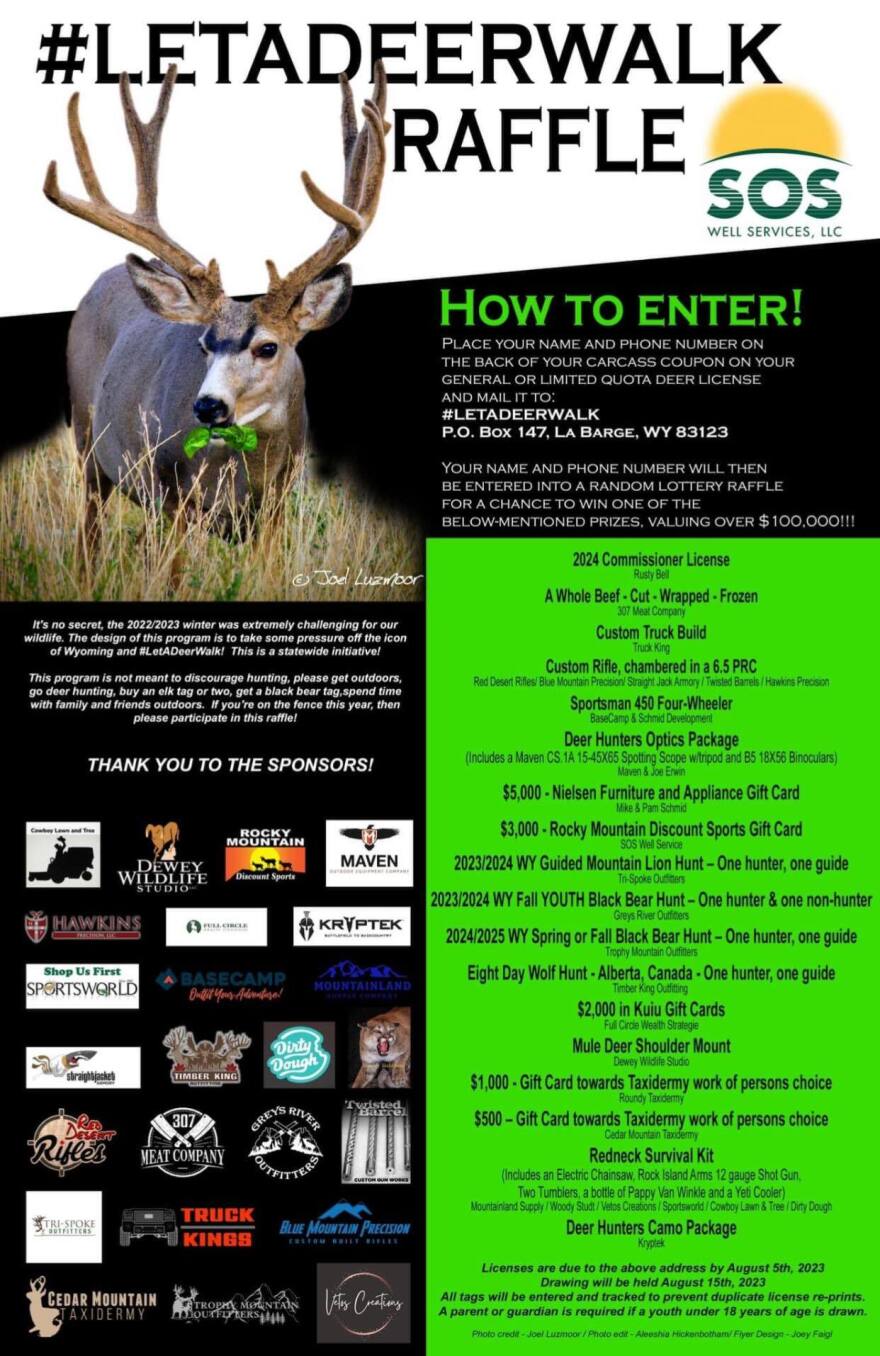In a recent Facebook video, Zachary Key greets four thousand viewers.
“Okay, here we are,” Key said. “We’re gonna start this thing with initiation.”
Key calls southwest Wyoming home, and he lives and breathes hunting. So what he does next with his hunting tag is unorthodox.
“We’re gonna put it right here, right in the shredder, and she goes away,” he said. “And that’s the commitment we’re making to the wildlife this year.”
That tag would’ve allowed him to hunt the mule deer herd that was devastated due to the recent harsh winter. Tens of thousands of mule deer and pronghorn died in southwest Wyoming this past winter and spring, causing the Wyoming Game and Fish Department (WGFD) to drastically reduce the hunting season. But some hunters are taking it a step further.

Key actually started a campaign called ‘Let a Deer Walk’ to get other people to forgo mule deer hunting. He didn’t ask everyone to shred their tags, but rather, hunters sent them to him in exchange for a chance to win prizes, like a brand new ATV or a whole beef.
“So we’ll do a little tumble,” Key said in the video as he churned a giant circular container of raffle tickets. “Ok, so here we go, here goes number one.”
He picked out a ticket and read it aloud.
“Scott Lewis of La Barge, Wyoming of all places,” Key said. “You're the first draw.”
Over a thousand people put in, many of which were in southwest Wyoming. This means over a thousand people not mule deer hunting this year.
And that’s largely because the future of the Wyoming Range Mule Deer herd is uncertain.
Kevin Monteith is a professor at the University of Wyoming and is a top expert on mule deer – he’s been studying them for years. Monteith said before this winter, the Wyoming Range Mule Deer herd was one of the largest in the world.
“Right now, they don't hold that number one spot anymore,” he said. “It’s not to say they can’t return to that historical abundance, but literally through the course of a number of months through winter, when you’ve lost the majority of your population, it’s certainly far different than it was just one year ago.”
The herd was at about 30,000 animals last year. The WGFD doesn’t have final data yet, but Monteith estimates as many as 70 percent could’ve died. It’s a similar story with the Sublette Pronghorn herd – also one of the largest in the world – the WGFD estimates almost half perished.

“The level of loss associated with this winter is nearly unprecedented, like catastrophic level loss,” Monteith said.
But how these herds recover is complicated.
“Hunting will virtually in no way limit recovery of those populations,” he said.
Monteith said that’s because the WGFD changed hunting this year, basically doing away with all doe and fawn tags in the southwest and even shortening some seasons. This left tags just for bucks, which Monteith said is okay.
“It only takes a few males proportionally to be able to service a number of females and maintain high pregnancy rates within the population,” he said.

He added that the recovery of the populations will take years, and what will affect them the soonest is how hard this winter is – not hunting.
But some hunters still feel it’s their duty not to hunt, like April Stansell.
She works at the Daniel Junction – a little gas station near the Wyoming Range that sells the essentials, like beer, ice cream, fried chicken and hunting supplies. Stansell is an avid hunter herself.
“This was 2020. He was just a small one. But it was my very first deer ever,” she said.
She showed a picture on her phone of a small mule deer buck she shot in the Wyoming Range.
“I did it all by myself,” Stansell said. “My husband came up and literally just picked me up. And we took it home, and then me and my dad butchered it.”
She looks forward to hunting every fall – spending time by herself in the mountains and amongst the wildlife. But this year, she’s also choosing not to, in fact, Stansell submitted her tag for the raffle.

“I just feel like it was a good decision to just give animals a break,” she said. “Not push them too hard, because they already had a bad winter.”
Stansell said she might not even hunt mule deer next year.
But this isn’t the case for everyone – some people are still choosing to hunt like normal this year.
“I had two guys come in this morning for deer and elk in archery,” said Seth Keen, who also works at the Daniel Junction and sells hunting tags.
Keen sat behind a counter, with shelves of bullets behind him and archery bows hanging from the ceiling.
“Deer and elk, I'm seeing an uptick in both of those sales here,” he said.
Keen said he thinks people still want to get out – it’s part of the culture. But as for him? He said he’s not hunting mule deer this year, that it’s part of being a good sportsman.








